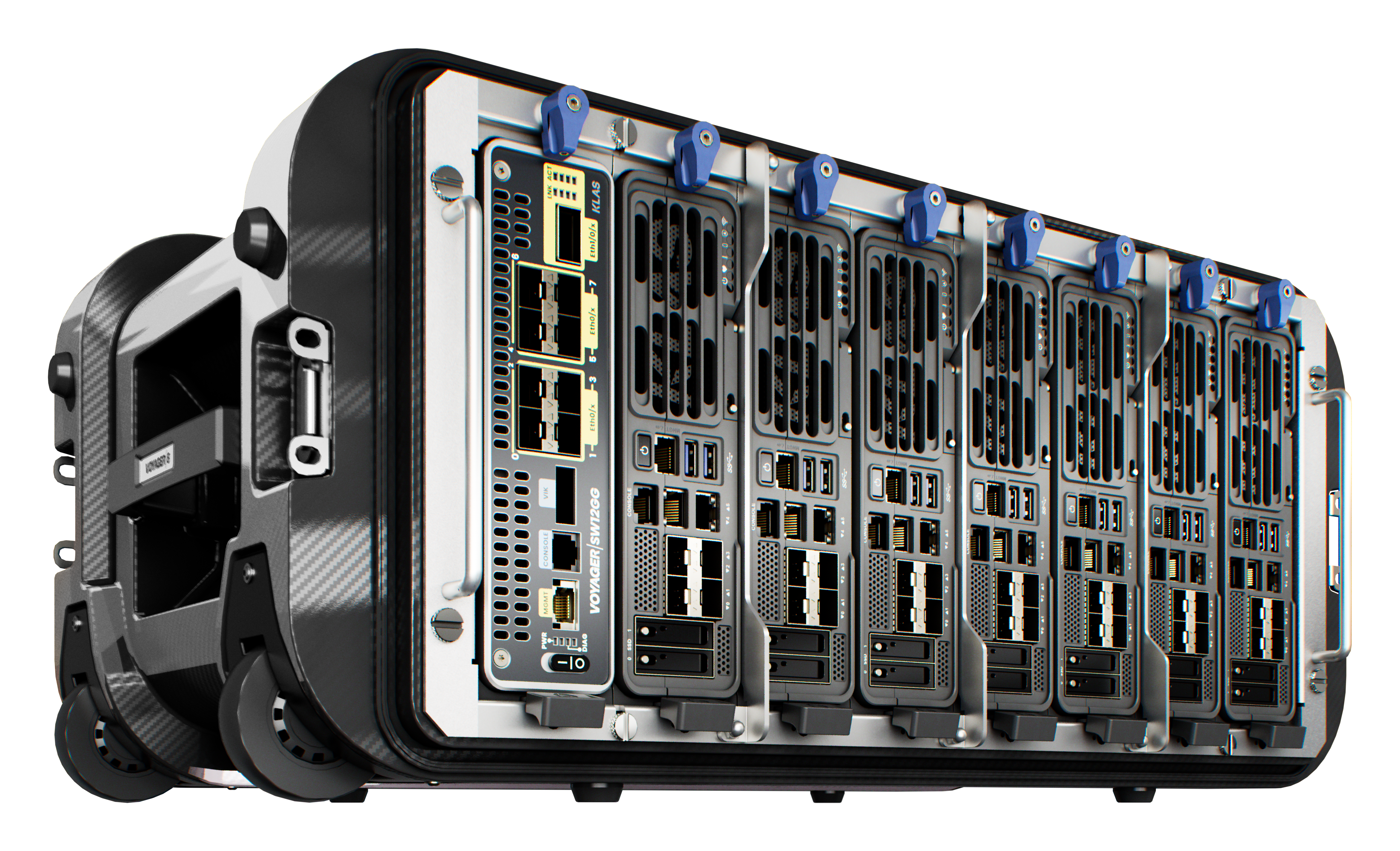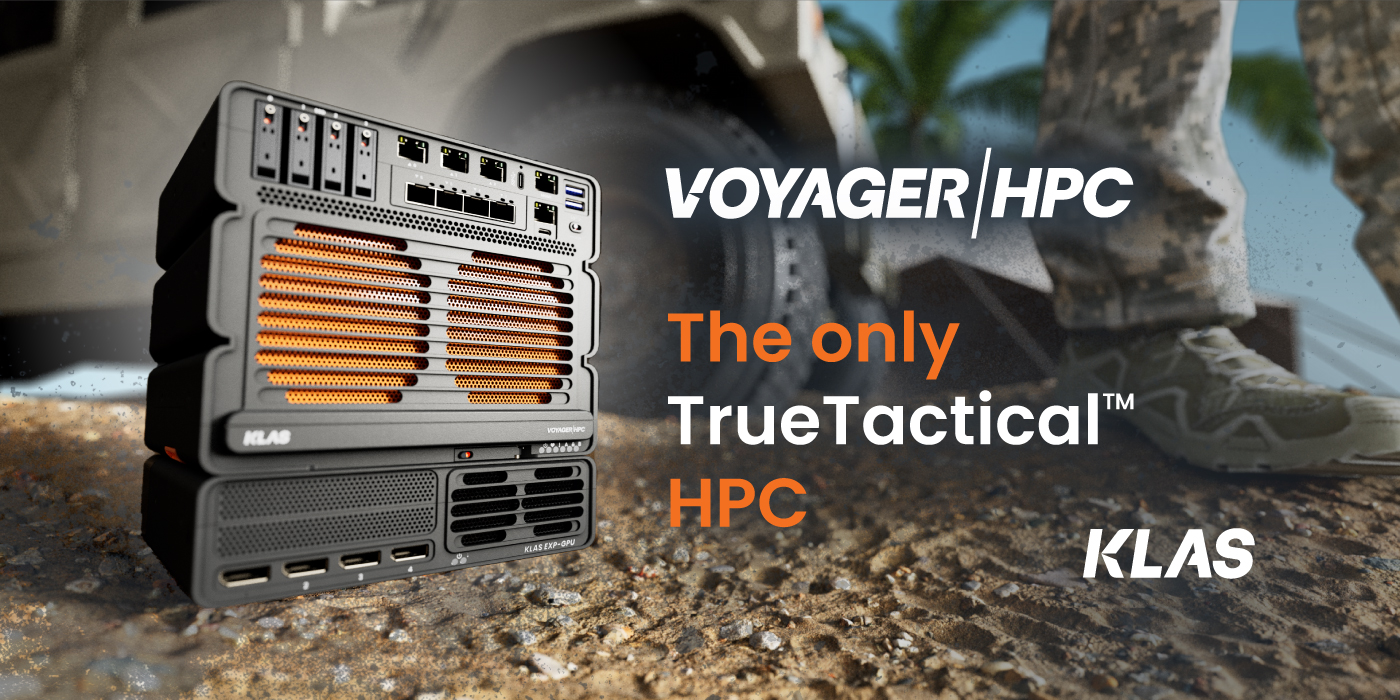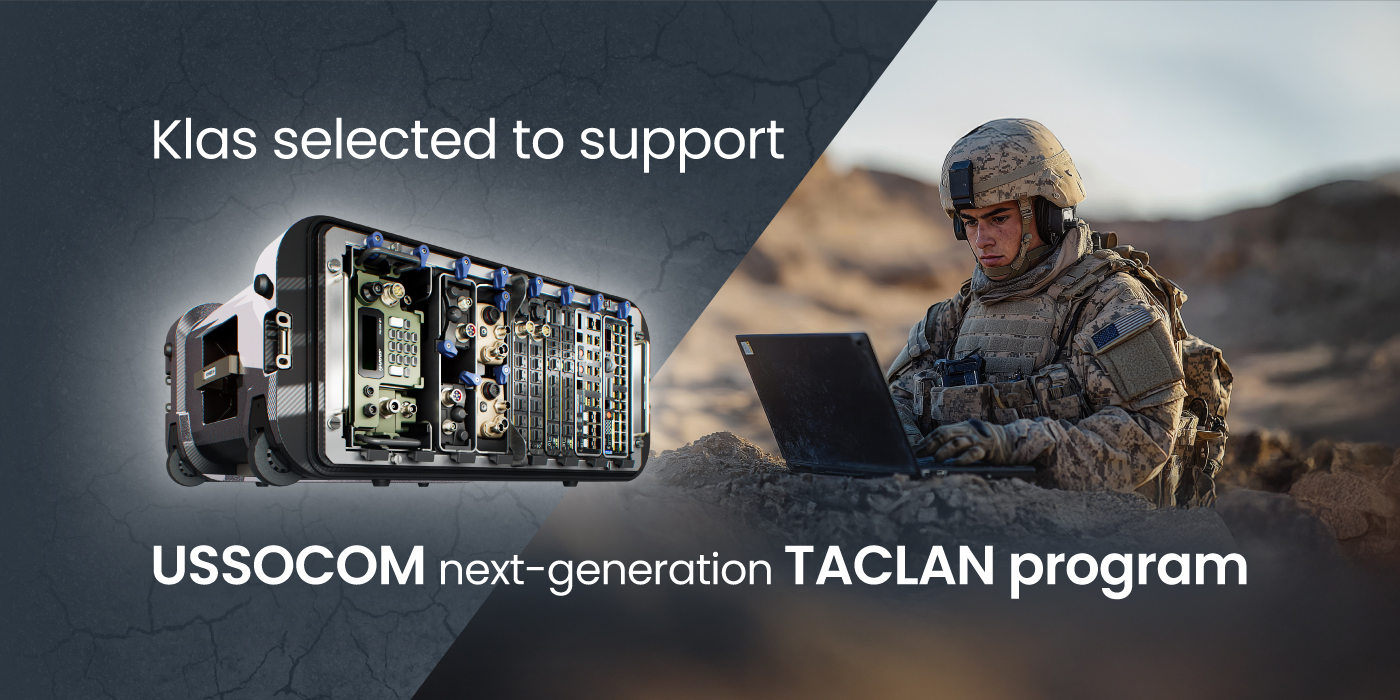The Voyager Chassis is a critical component when rapidly deploying mission-ready systems to austere environments at the Tactical Edge.
The Voyager Chassis comes in many form factors to suit the needs of different operations at the Tactical Edge. However, they all have one thing in common: They are designed rugged to protect and safely distribute power, including battery backup, for the modules and radios inserted into the chassis.
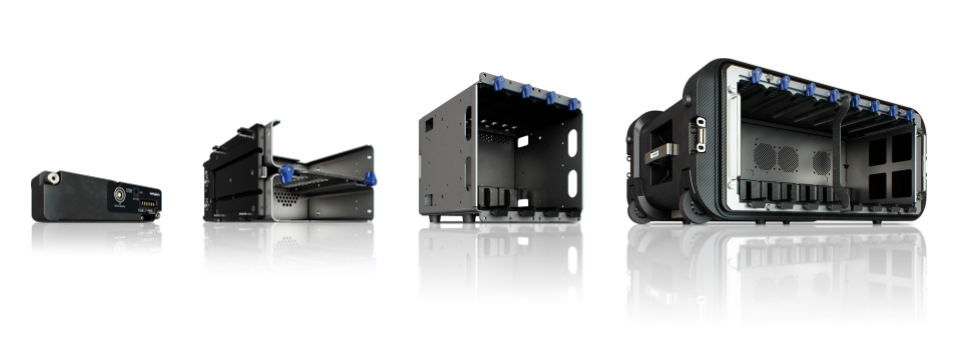
Rugged chassis construction
The purpose of the Voyager Chassis is to protect, power and actively cool the inserted Voyager modules and radios. Therefore, the chassis itself is constructed to withstand extreme handling conditions, such as being dropped, kicked and knocked, jumped upon, or continuously rattled.
“Some companies adapt their network, compute, storage solutions to meet the MIL-STD-810 ruggedized specs. Good on them. Klas builds to meet the rugged operator’s mission requirements BEFORE it’s put in a case. If you can’t jump it, drop it and kick it, it’s not rugged.”
Robert Byrd US Army (RET) and former mission consumer of Klas capabilities
Design and construction are key to the chassis’ strength. Constructed of aluminum sheet metal, the chassis is designed to be strong and corrosion-resistant. When it comes to protecting the modules, the chassis ensures against any movement of the modules. This is achieved using milled aluminum latches on the outside and guide rails and locking mechanisms on the inside.
Video: Voyager chassis undergoing MIL-STD vibration testing.
Tactical Edge communications ready
A significant difference of the Voyager chassis is the ability to host different Voyager module types, including 3rd party modules, alongside the communication infrastructure of multiple radios.
Voyager radio brackets allow for easy integration of radio devices from different vendors into the chassis. Multiple radios can be powered from the chassis to support a holistic deployment for data sharing over IP and Mobile Ad-hoc Networks (MANET).
For example, the Voyager 6 is a vehicle-mount chassis that is Standardized A-Kit / Vehicle Envelope, or “SAVE” standard compliant. The chassis will remain fixed in place and connected to the in-vehicle power harness. However, the Voyager modules and radios can easily and rapidly be removed as and when required.
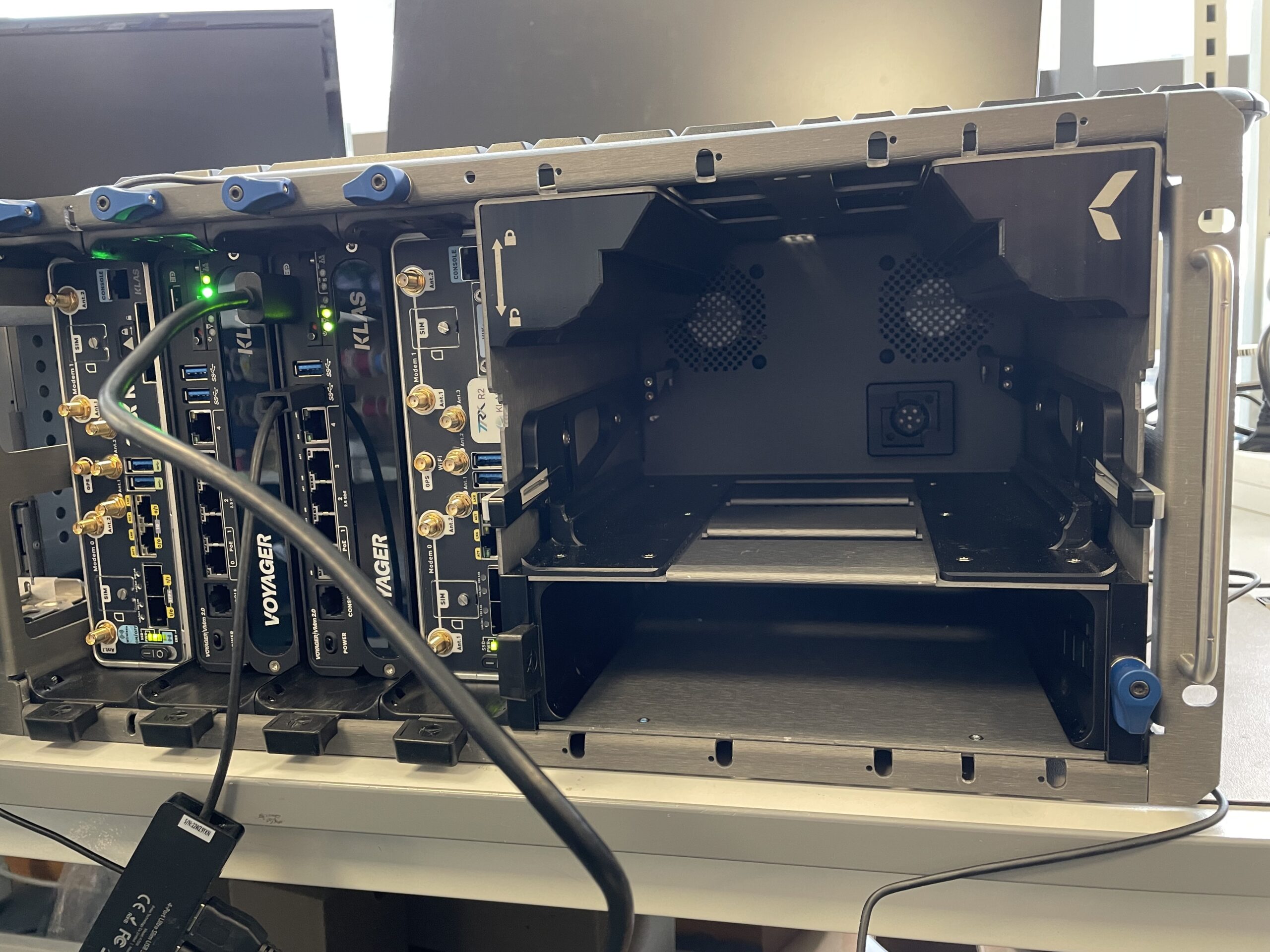
Future-proofed form factor
While each chassis can support and power different Voyager modules and radios, the one thing that remains consistent is the form factor, known as the Voyager form factor. By adhering to a standard form factor, Klas can introduce new modules or radios at any time that are compatible with existing Voyager chassis investments.
With the increasing demand for compute capability at the Tactical Edge, the Voyager form factor means existing setups can incorporate advanced compute capabilities at any time without the need to replace the chassis.
Take VoyagerVM 4.0 as an example. The compute module is compatible with the existing Voyager chassis. However, when the module is expanded by snapping on a GPU or NVMe storage expansion module, it all slides seamlessly into the chassis types that are greater than two slots.
Learn More
Voyager chassis, right-sized for all deployment requirements – https://www.klasgroup.com/government/products/#chassis
Voyager multi-vendor radio brackets – https://www.klasgroup.com/government/products/#radio-brackets
TrueTactical, the standard for rugged C3 command posts – https://www.klasgroup.com/government/truetactical/



